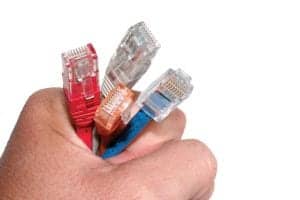With the fall CBET testing date recently past, now is the time to begin preparation to become a certified biomedical equipment technician (CBET). But how does one begin the journey to obtain this career goal? This article will highlight several aspects you may be aware of but are definitely worth repeating. First, we will look at study habits that may help you and begin a general overview of what anyone preparing for the test should know. By no means are the suggestions at the end of the article inclusive of the entire knowledge bank needed to pass the exam, but they are an excellent beginning.
 |
| Studying with others can offer numerous benefits including reinforcing your knowledge as you explain concepts and comparing notes to clarify your understanding of the material. |
To begin with, it has been my experience that most exam takers do not start the preparation process early enough to give themselves a fair shot at passing the exam. Personally, if I were beginning the process again I would start by visiting AAMI’s site (www.aami.org/certification/exam.html), where you can begin your plan of attack by reviewing all the resources AAMI has to offer for certification seekers. One of the best pieces of advice I have found on this Web site is to begin your study process at least 3 months before the test date. It may sound like a long time, but with work, family, and all the different entities vying for your time, the test date will be upon you before you know it. I have known many successful test takers starting even further out than the 3-month period recommended by AAMI. It is much better to start studying early and slowly build your pace to the testing date.
Develop a Formula
Before you begin the study process, you may want to consider using a formula for your studies. A proven study technique such as the SQ3R method may be helpful. SQ3R stands for survey, question, read, recite, and review. Educational studies have proven this study technique to aid in transferring information into long-term memory. The “survey” refers to looking over a chapter to be studied to see such things as headers or different sections on the topic. By surveying the information you should form “questions” about the material that you will be looking to answer during the next phase of the study session. “Read” is just that—read the material and see if you can answer your questions. When you finish the reading, “recite” the information or answers to the previously asked questions. Lastly, you will want to “review” the information on a fairly regular schedule to help transfer the material into your long-term memory.
Other study techniques that may be used are to set a certain schedule for your studies. Let’s say you are just beginning your studies. You may want to dedicate 1 hour, 2 days per week to reviewing material you know will be on the test, such as electronics or anatomy and physiology. You should attempt to set up the same time each week for study, and you should also pick a place to perform your study. Try to keep your format the same week to week. As you get closer to the testing date, I would suggest you keep increasing your time spent on reviewing material but use the same place for each study period. It is also a good idea to dedicate the time of study to be without any distractions, so turn off the television, the cell phone, and the iPod, and give yourself the benefit of this dedicated time. However, I have seen education studies that suggest that playing very soft baroque, classical music in the background will aid in transferring information into long-term memory. This should make sense to everyone reading this because most everyone will hear a song from time to time and it will spark a memory from long ago. Music, just like color or smell, can trigger the memory, so use these triggers to help in the study process. Again, educational research shows these techniques will help in retaining information.
Regarding study materials, I would suggest you begin with the pamphlet that is on the AAMI Web site. Here you will find a breakdown of the test by percentages of questions from each category, such as safety, electronics, etc. For study material, you should be able to use many of your old text books such as your electronics; anatomy and physiology; safety and standards, such as NFPA 99 or AAMI’s Electrical Safety Manual; and, of course, a good intro to biomedical equipment technology book, such as Carr/Brown’s Introduction to Biomedical Equipment Technology or the newer book by Les Atles, A Practicum for Biomedical Engineering & Management Issues.
Using the test breakdown pamphlet provided on AAMI’s Web page and the information provided here would be an excellent beginning to your study for the CBET exam. Instead of going into great detail on each subject here, I will list some basic information and you should ask yourself, “Do I know much about this topic?” My guess is anyone passing the exam would be able to write a page or more on each topic listed and how it is related to medical equipment and the human body.
No Way Around It
The following are what I consider “must” study areas:
Mathematics—Know scientific notation, how to handle exponents in math, how to handle fractions such as add, divide, multiply, etc. Be comfortable with basic algebra such as solving for x, and be familiar with conversions, such as Celsius to Fahrenheit.
Electronics—You should be comfortable with series/parallel circuits, especially how these types of circuits affect current and voltage. You should brush up on RC, RL, and RLC circuits, and especially ELI the ICE man, and how these all pertain to capacitive reactance and inductive reactance. If you are not familiar or cannot remember any of this, break out the old electronics books or use the new resource—Google it. You would also want to brush up on transistors, especially the common emitter configuration, Darlington pairs, cascaded amps, and the FET family of transistors—especially their schematic symbols. Op amps will definitely be on the exam with several questions pertaining to op amp circuits and operation. You should know information such as frequency response, the different configurations of op amp circuits to perform different tasks and properties such as virtual ground, and the six properties of op amps and why those properties lend themselves to be used in instrumentation circuits.
On the digital side on electronics, make sure you know all the basic gates and how to write a truth table for each. Flip flops will also be on the test. Make sure you know how to handle flip flops and especially things such as JK flip flops, edge triggering, synchronous, asynchronous operations, etc. Make sure you can convert binary to hex or octal and back because you will be asked to use this information on the test. You may even get a question about resolution of a 4-bit A/D converter; make sure you know how to do this.
Medical Terminology—A very helpful subject to know. If you know your medical terminology fairly well, you will probably get a couple questions correct and not even know exactly what the question is asking. But if you know the terminology you can figure it out by a process of elimination by knowing what the words mean. For example, if they use the word “xxxxitis” in the question, if you know that the suffix “itis” means inflammation of, you stand a pretty good chance of getting the answer correct when you read the four possible answers. Also, make sure you know the planes of the body such as dorsal and distal and how the body is divided, such as Sagital, Coronal, etc.
Anatomy and Physiology—These questions are very tough to study for because there is so much material that questions could be drawn from. I would review all body systems, but know that most questions are not going to be about bones, etc. Stay more focused on what bones do, such as produce blood cells. On the muscle system, make sure you know about tendons and ligaments and their function, such as connecting bone or muscle. Several questions may come from the nervous system, so be familiar with axioms, dendrites, and afferent and efferent nerves, along with CNS, PNS, and what is controlled by these two systems.
|
Read past ICC Prep and CCE Prep articles in the archives. |
In the cardiovascular system you should know complete blood flow in the body and the heart. Be aware these questions may be very specific, such as what valve is where and is it a tricuspid valve or a semilunar valve? When you study blood flow, make sure you are aware that blood flows away from the heart in arteries and to the heart in veins. Arteries carry oxygenated blood and veins carry deoxygenated blood; this holds true in every instance except the pulmonary artery and pulmonary vein—and this question is very likely to be asked. Make sure you know percentages of blood constituents such as the formed elements like red blood cells, white blood cells, what percentage of blood is plasma along with the pH of blood. Not only venous blood but also arterial blood as well, because they do have slightly different pH levels. You will also see several questions about the endocrine system, so know your endocrine system glands, where they are located, and what hormones they produce.
This is just a very small portion of what needs to be studied to prepare yourself for the CBET exam, but this is a good start in your journey. In my next article I will provide other “must” study areas about the actual medical equipment. Until next time, start studying!!
John Noblitt, MAEd, CBET, is the BMET program director at Caldwell Community College and Technical Institute, Hudson, NC. For more information, contact .
Review Questions
- The normal range for pH in arterial blood is____?
- 7.00 to 7.25
- 7.25 to 7.35
- 7.35 to 7.45
- 7.45 to 7.55
- Which of the following has the most effect in the regulation of blood pH?
- Renal system
- Respiratory system
- Endocrine system
- Chemical buffers
- The kidneys regulate the amount of____in the blood.
- pCO2
- pO2
- HCO3–
- None of the above
- Which of the following would be a normal pCO2 measurement?
- 20 mmHg
- 30 mmHg
- 40 mmHg
- 50 mmHg
See the answer
See the answer
See the answer
See the answer





